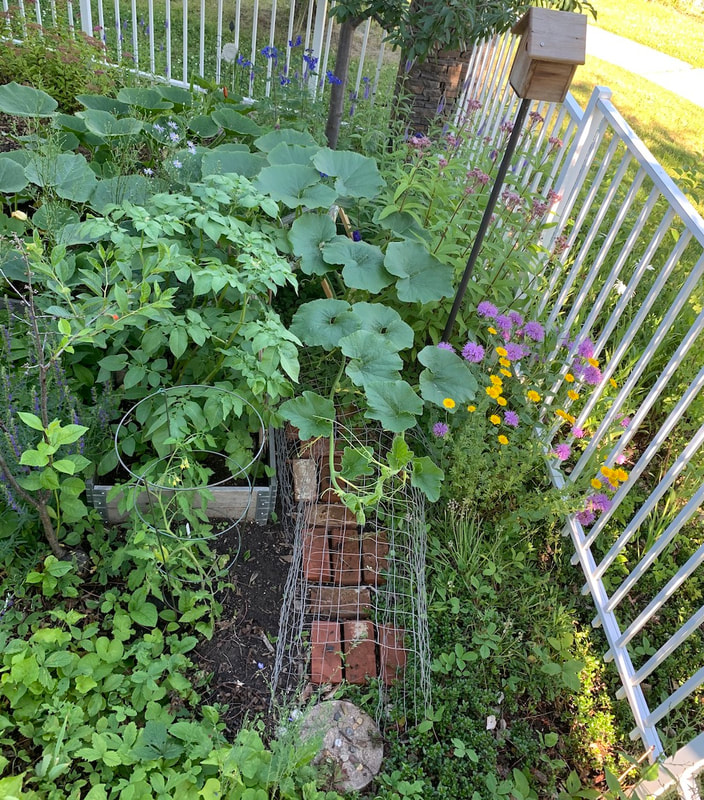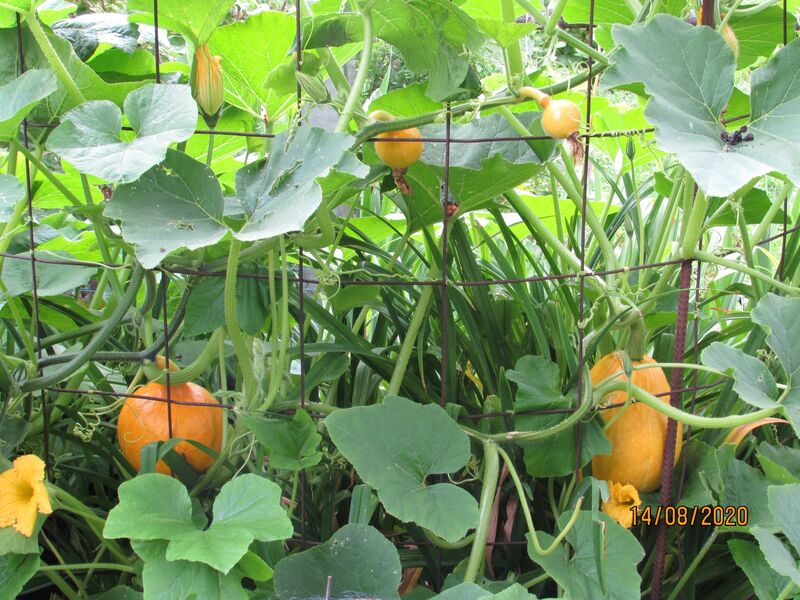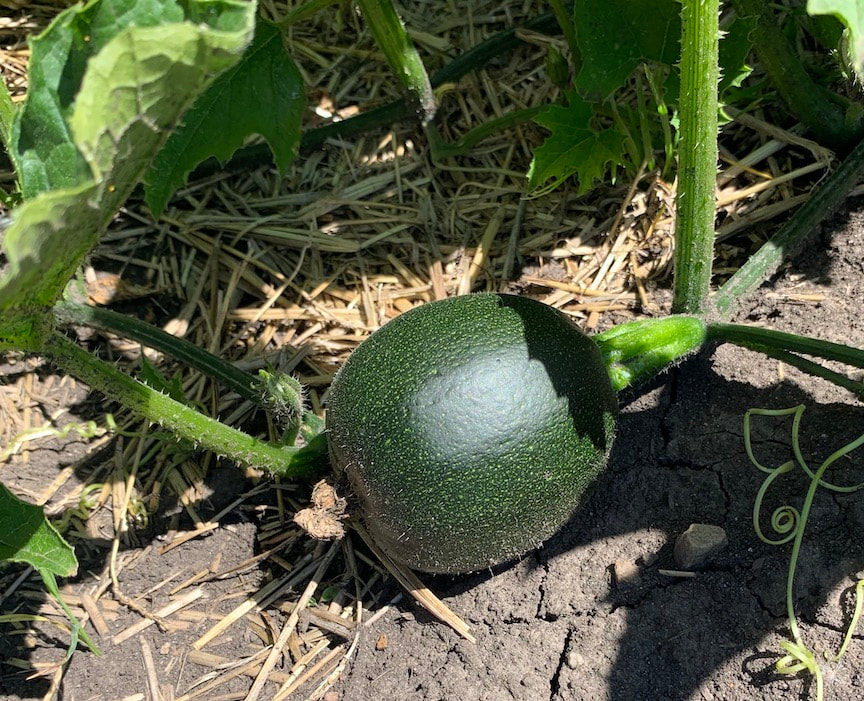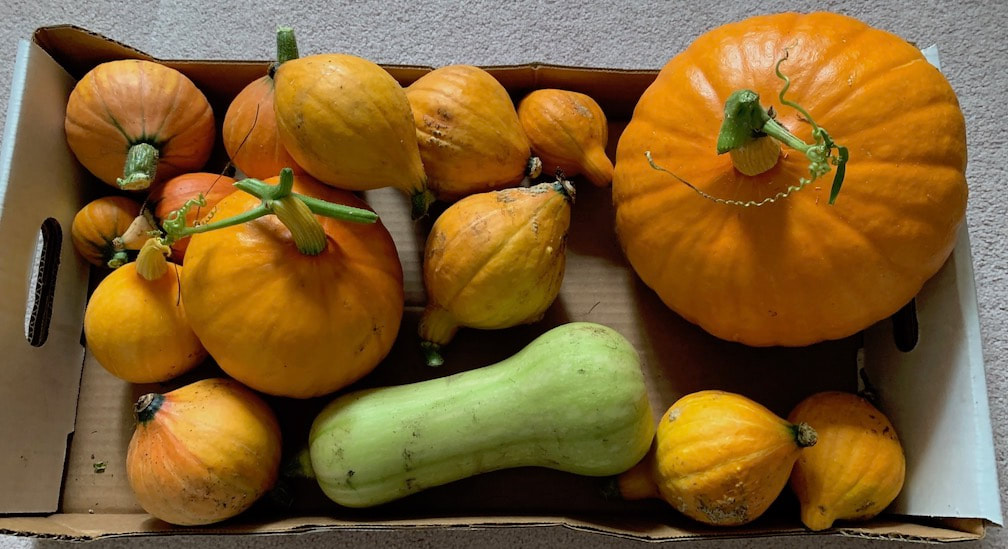
Protecting the seedlings early in the season is really important. I use plastic domes with a vent hole from the dollar store until they get too large. By then it has hopefully warmed up and the winds eased. In the city, this is often the case, but in more exposed areas, wind protection is required. My gardening buddy lent me a heavy duty plastic ring – the top of a food grade plastic barrel converted to a rainbarrel (see image above). The ring is almost 2 feet in diameter and open at the top, blocking lots of wind but allowing the sun to warm the growing squash seedling.
The next challenge is nutrients (and some hot days!). In my community garden, the rich clay soil provides all the minerals for good fruit development. In my home garden, I planted two squashes into an 8-month old compost pile. While the plants were super happy in the protected yard and vines and leaves grew many feet, most of the baby squashes shriveled up and fell off. There have been many bumblebees around, so I don’t think it’s a problem with pollination. While I don’t have any data, my feeling is that the partially cured compost is not rich enough in calcium and other minerals, plus the summer has been very cool. I added a calcium/magnesium supplement to the watering can a couple of weeks apart. After some wonderfully hot days, 2-4 small squashes developed properly. It’s possible that with time, the roots also travelled far enough into the clay below the compost pile to find what they needed.
Keeping squashes from strangling other plants is another job. In my small home garden, I created wire tunnels, a sort of bridge for the squash vines, leading them over and between other plants. Squash tendrils are very strong and grab onto any flowers or shrubs. My gardening buddy sent a photo of a great vertical trellis created with 6”x6” wire mesh (used to strengthen concrete; available from Home Depot for example). At my windy community garden, keeping the squashes low to the ground is better. So I place straw under the vines and try to keep them in the beds to avoid stepping on them.
As we creep towards shorter days and cooler nights, mildew inevitably makes an appearance. It’s best to keep the squashes well watered and fed. I give them a little bit of liquid fertilizer or seaweed fertilizer about once a week. Also, it’s best to avoid splashing soil onto the leaves. Some research suggests that spraying a mix of milk and water onto the leaves provides some protection. I use a mix of 25-30% milk into water and spray the leaves every few days. For more info, visit this site.
My favorite squashes to grow have been Red Kuri (long vines, large sweet fruit), Gold Nugget (compact plant, small orange fruit), and Gem squash (very vigorous, small green fruit). Maybe next year I’ll try out a new one. Let me know if you have a favorite that grows well in our area.




 RSS Feed
RSS Feed